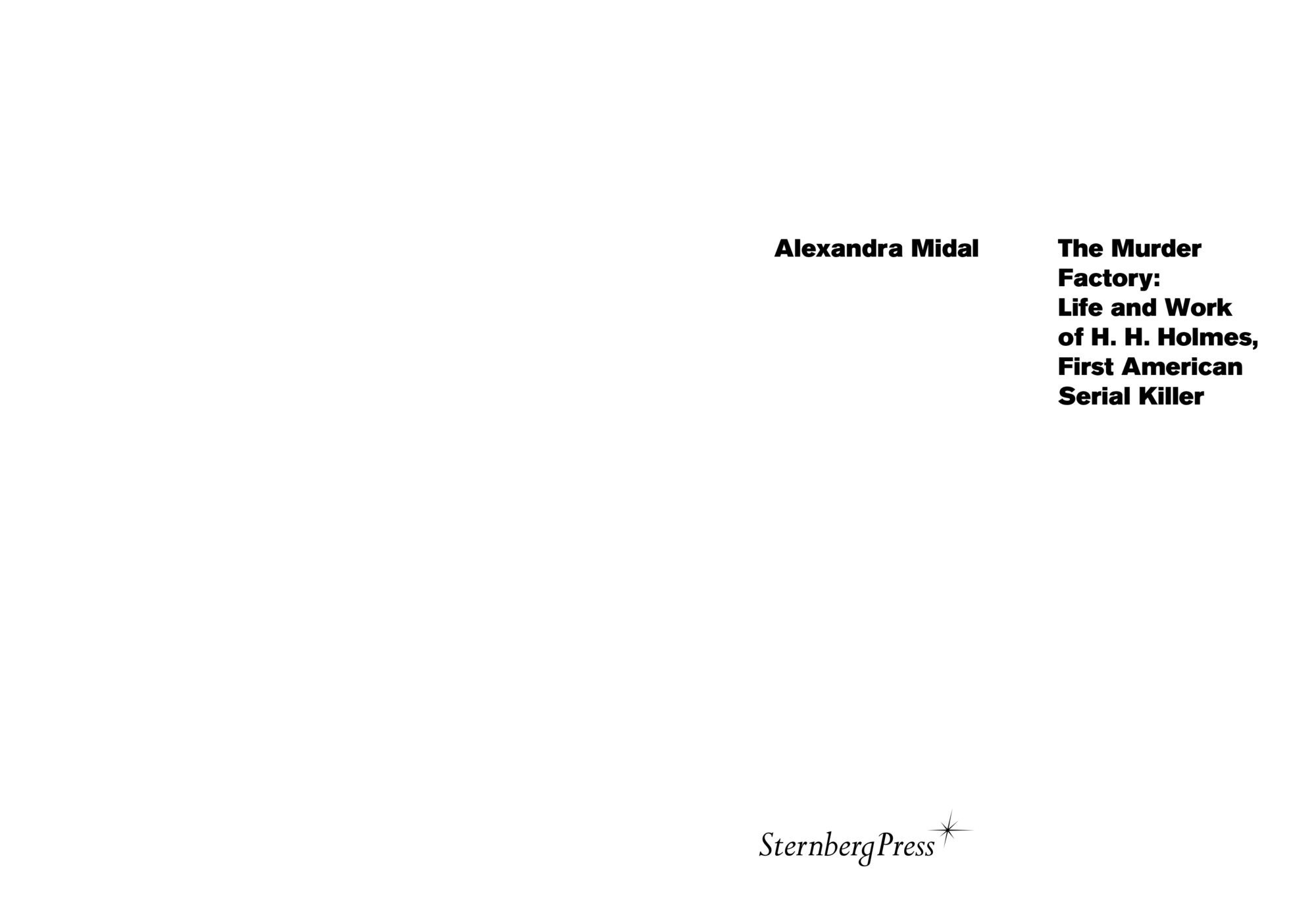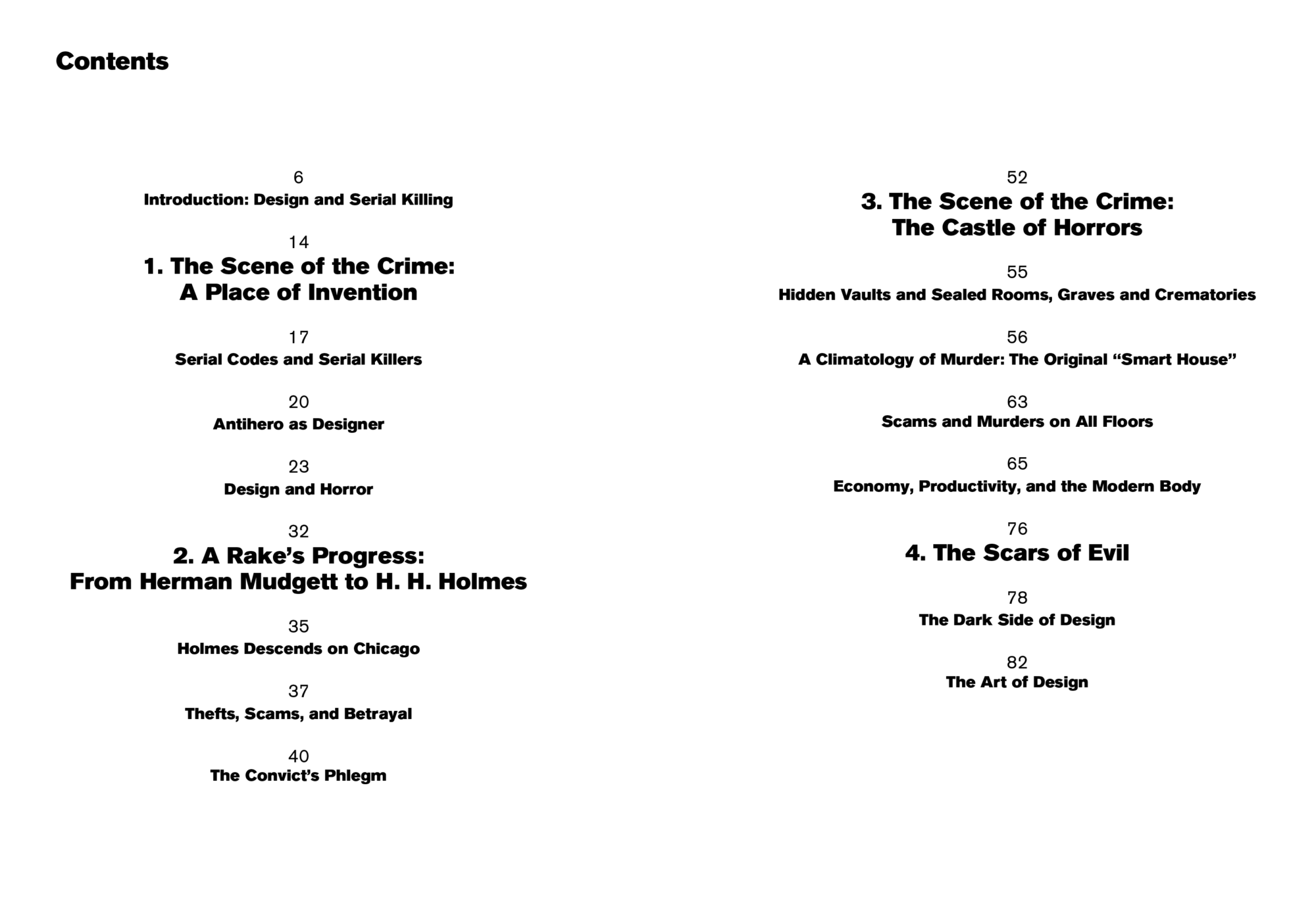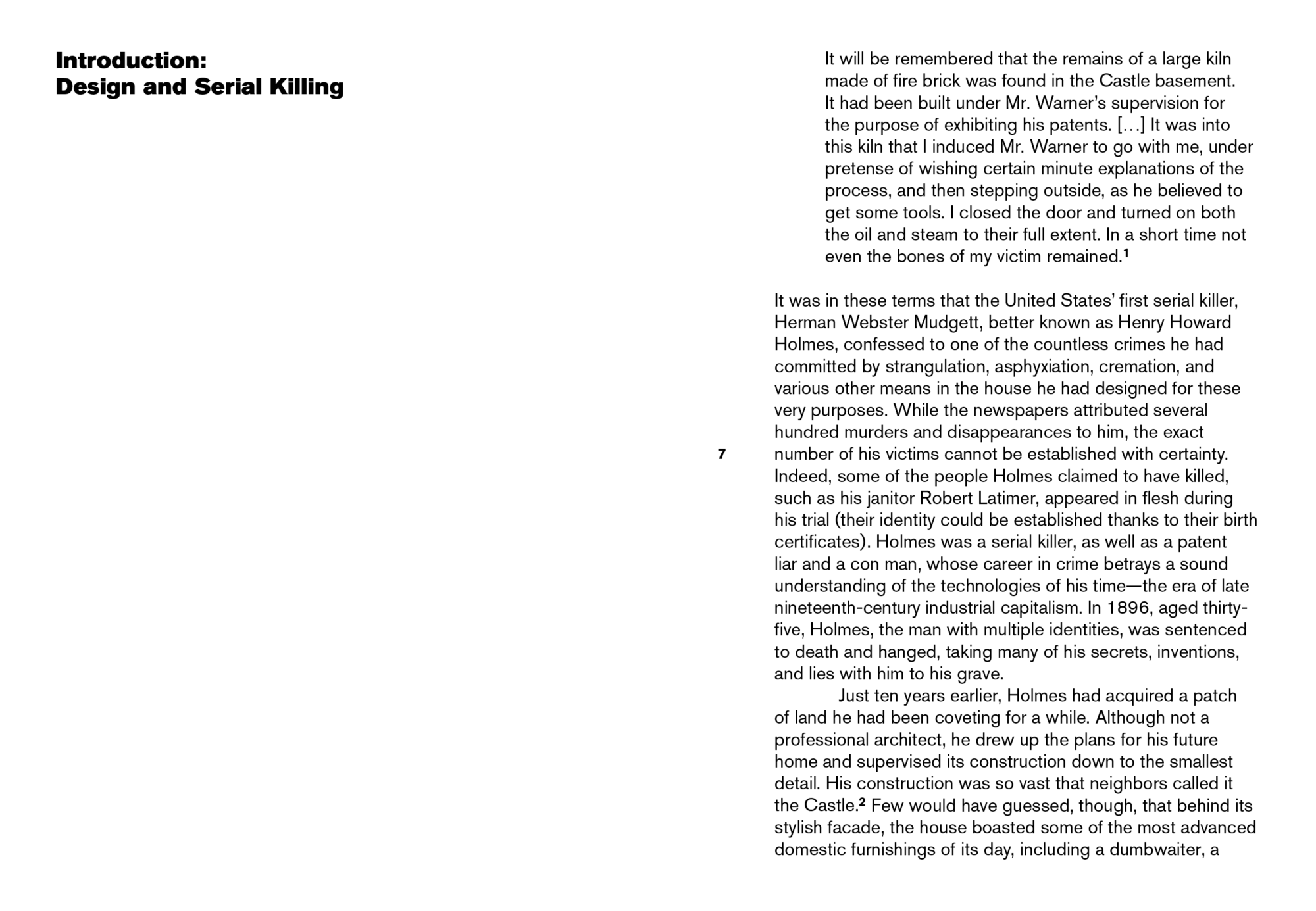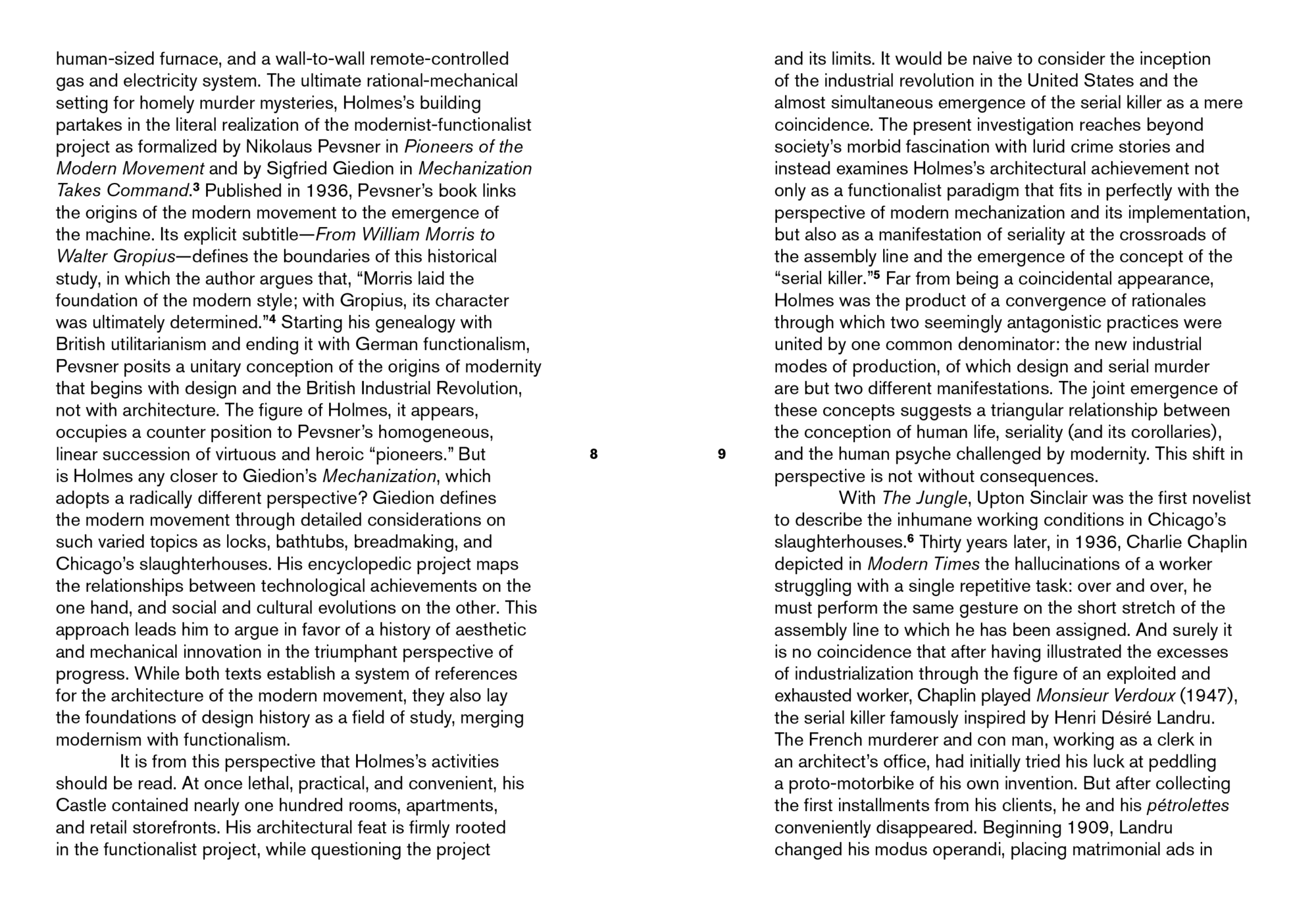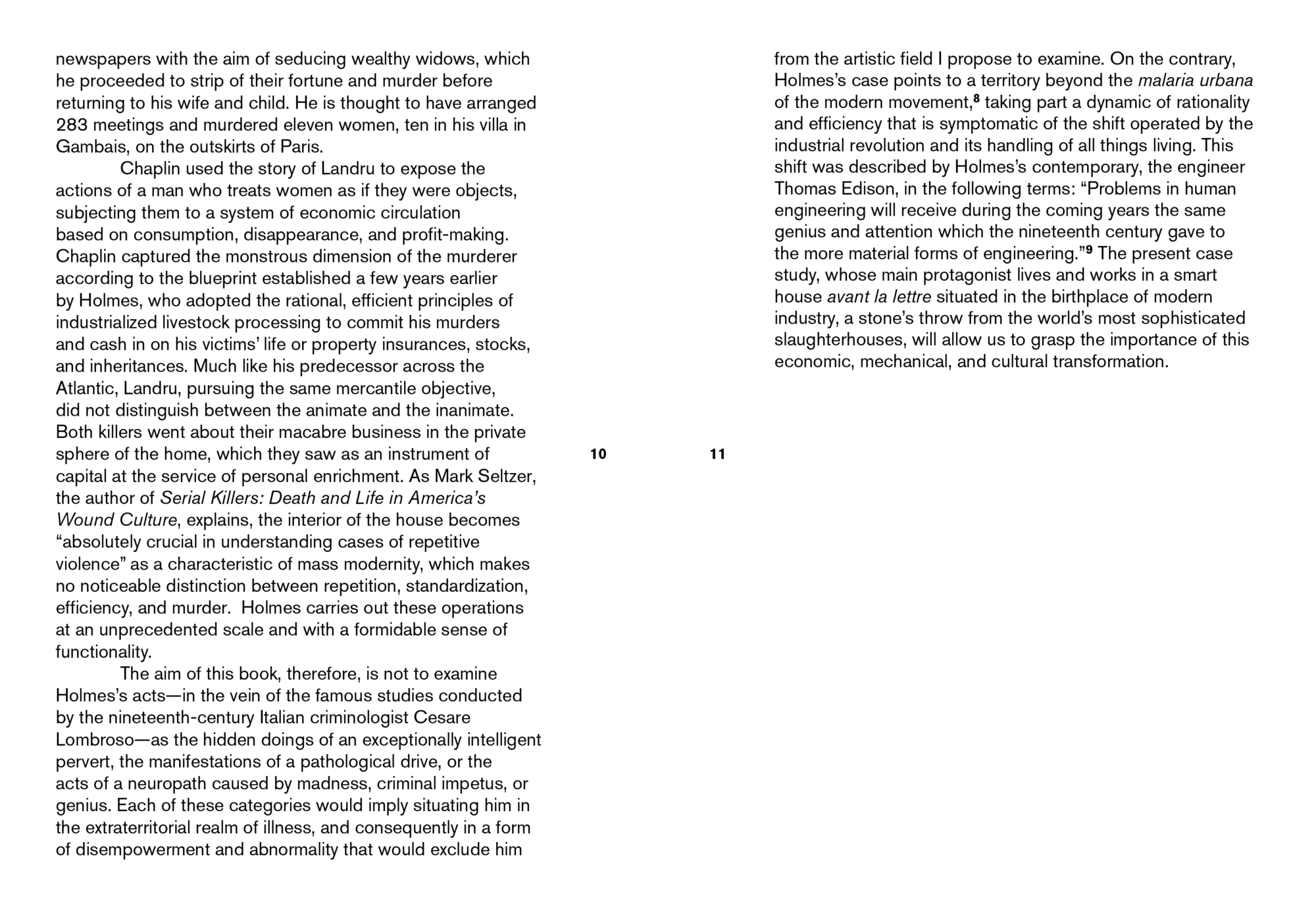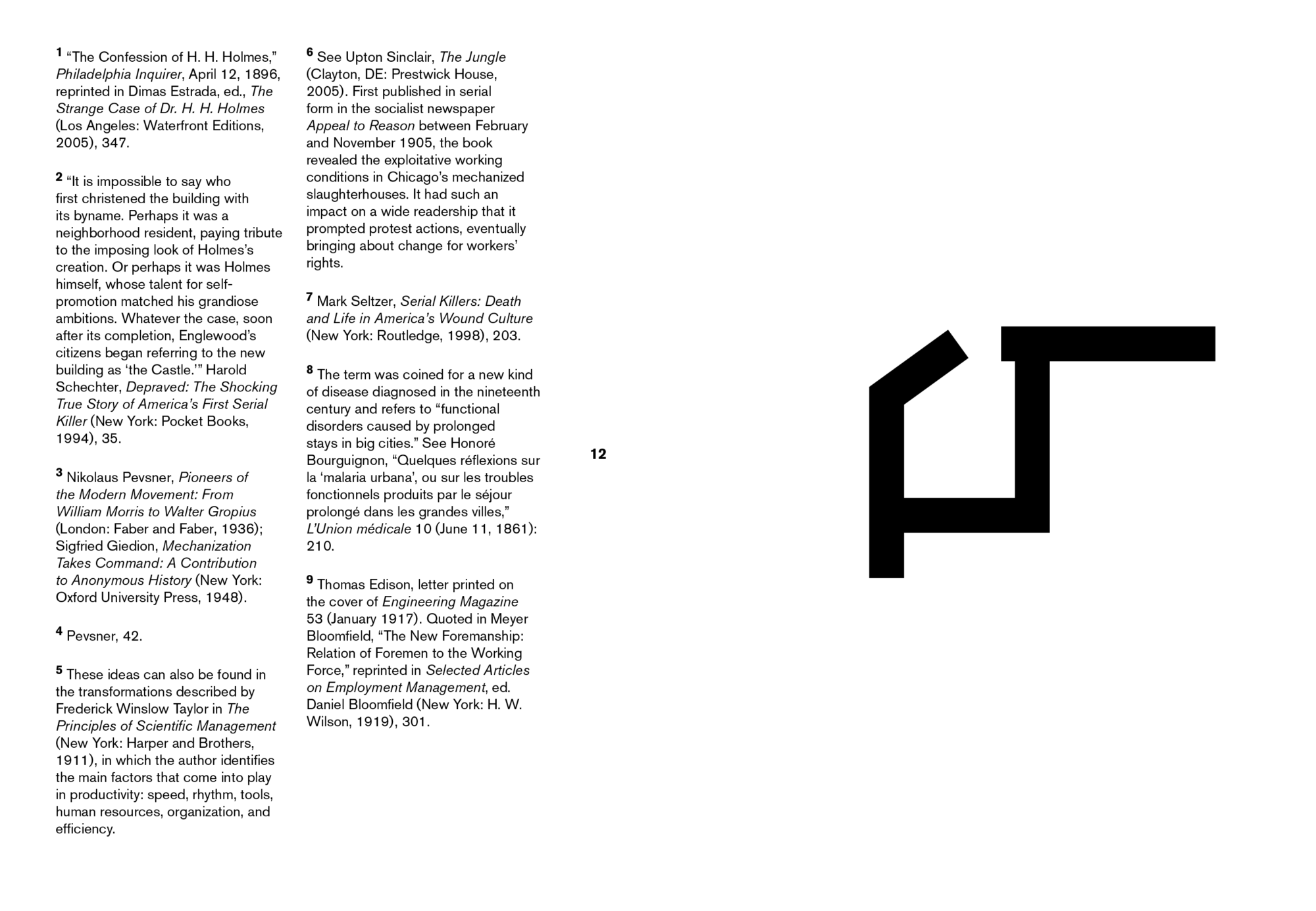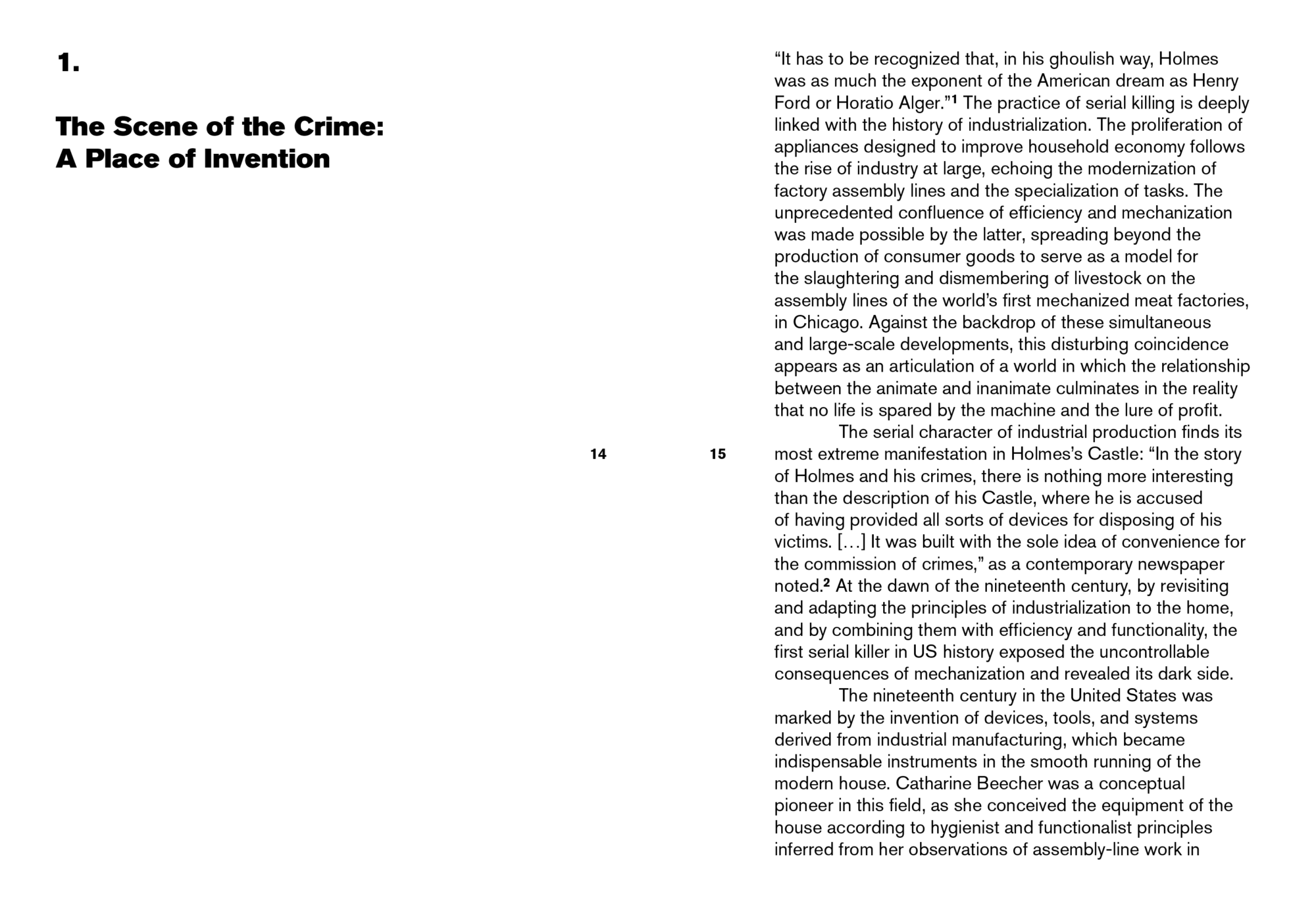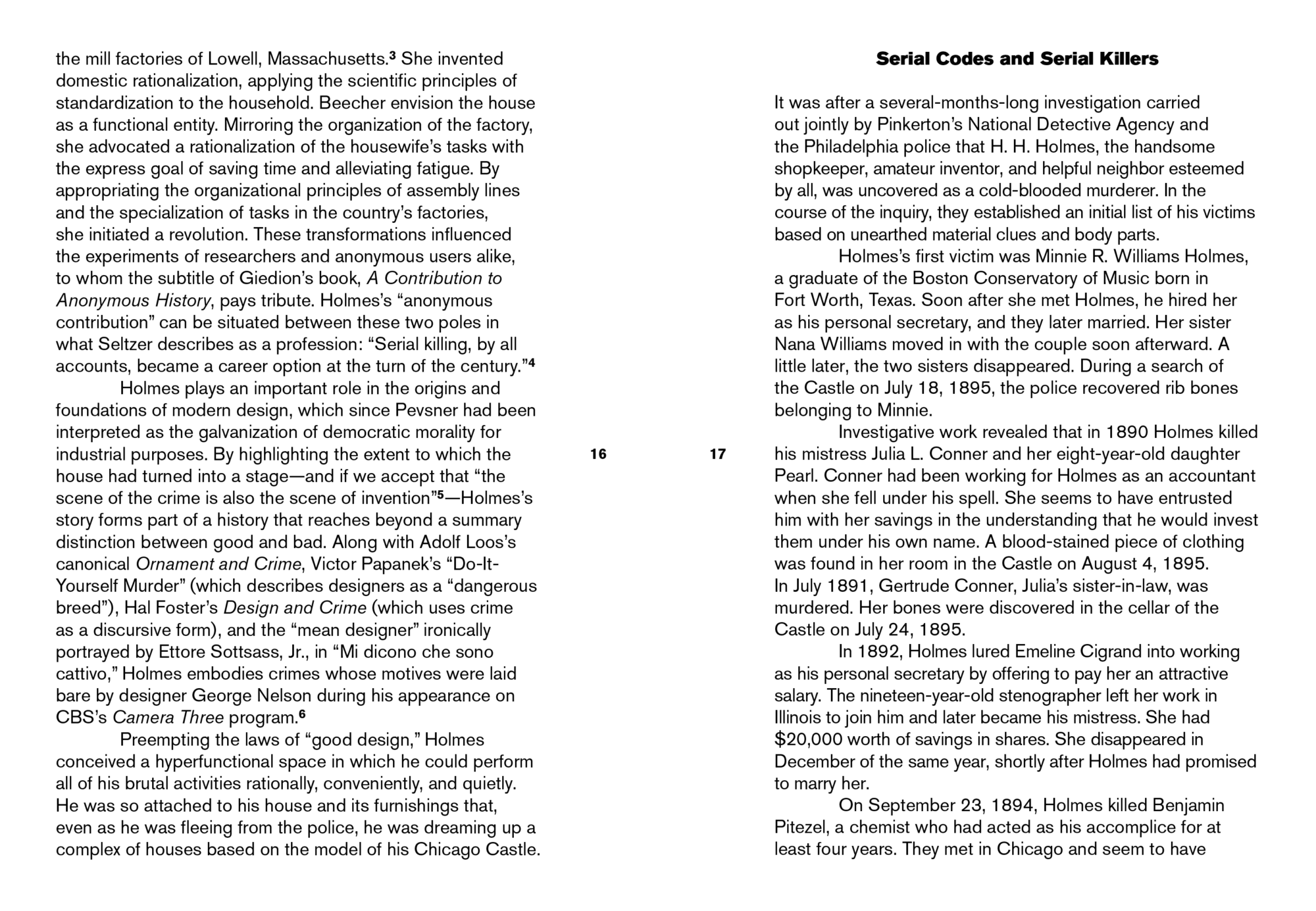Cart totals
| Subtotal | €221.95 |
|---|---|
| Shipping |
Shipping options will be updated during checkout. |
| Total | €233.40 (includes €19.28 VAT) |
| Subtotal | €221.95 |
|---|---|
| Shipping |
Shipping options will be updated during checkout. |
| Total | €233.40 (includes €19.28 VAT) |
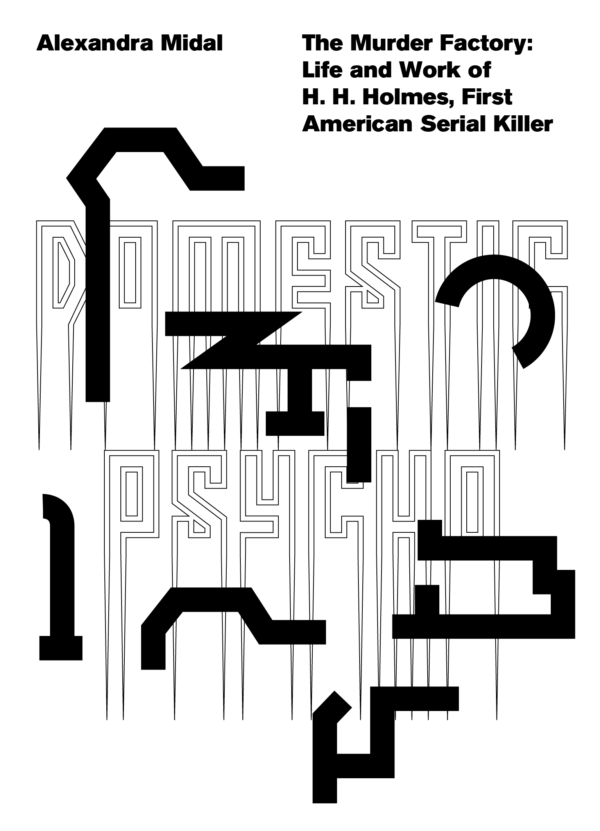
In 1896, at the age of 35, Henry Howard Holmes, whose real name was Herman Webster Mudgett, became the first serial killer in the United States, confessing to dozens of crimes. To carry out his activities quietly, he built in Chicago a building so vast that his neighbors called it the “Château.” Located just a stone's throw from the most sophisticated slaughterhouses in the world, lethal, practical, and comfortable, Holmes's building was equipped with the latest innovations. A rational, cozy masterpiece of crime dressed in slippers, Holmes's project fit perfectly into the functionalist project of the modern world.
In The Murder Factory, Alexandra Midal examines the almost simultaneous emergence of the industrial revolution and the figure of the serial killer. Far from being a coincidence, it marks the rationality of new production methods—of which the assembly line and serial murder are two expressions. In the Holmes case, an antihero of modern history can shed light on the treatment of living things brought about by this economic, mechanical, and cultural revolution.
H. H. Holmes's confessions, published in the Philadelphia Enquirer just before his execution in April 1896, follow Midal's text.
